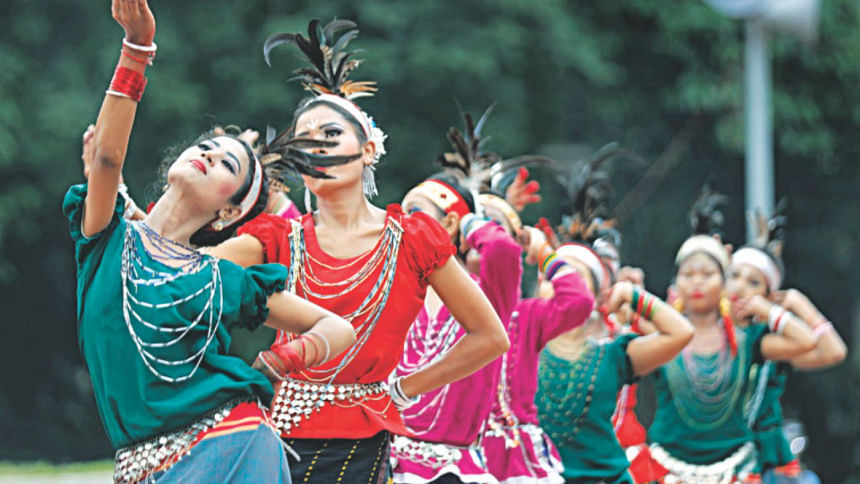Media failing indigenous people

The media fails to portray the true picture of the repression of indigenous people due to pressure of the communal, undemocratic, non-progressive and discriminatory governing system of the country, indigenous leader Santu Larma said yesterday.
Speaking at a seminar titled “Violence against Indigenous Women: Role of Media,” at Bangla Academy, he said many historical and social aspects were also playing a bigger role in the repression, and this situation would not improve only through law enforcement.
Manusher Jonno Foundation organised the event to mark International Day of the World's Indigenous Peoples, with its Executive Director Shaheen Anam in the chair.

The chief guest of the event, Larma said the people representing electronic and print media have individual perspectives, which are reflected when they publish or broadcast news about the ethnic minorities.
Journalists often judge an incident tied to the indigenous community with the psychological and emotional baggage they carry, said the president of Parbatya Chattagram Jana Sanghati Samity that signed the peace accord with the government in 1997.
By forging stronger relationships with journalists, editors and relevant personnel, “we can change the popular perspective, help them come out of stereotypical ideas about indigenous people,” said Sanjeeb Drong, general secretary of Bangladesh Adivasi Forum.
Ainoon Nahar, professor of anthropology, Jahangirnagar University, said, “We demand that the government let the press work freely.”
Zobaiyda Nasreen, associate professor of anthropology, Dhaka University, presented an article on media's role in ensuring justice to indigenous women.
She said the media often ignored the plights of indigenous communities living on plain lands since it mostly focused on those in the Chittagong Hill Tracts.

Criticising the government's position regarding the indigenous community, she drew attention to an advertisement of Bangladesh Parjatan Corporation where indigenous women and their culture were shown as beautiful features of Bangladesh to attract foreign visitors.
But the word “indigenous” was missing in the video clip because of the “no-Adivasi-lives-here” stance of the state, Zobaiyda said in the article.
She also blamed the media for seeing indigenous people's problems through the eyes of the majority. To the media, indigenous issues are still local issues, not national issues, she said.
“The incidents [torture, rape, gang rape of Adivasi women] are reported without historical and political aspects, which is why the crimes happen repeatedly,” Zobaiyda noted.

Shaheen Anam said the rights organisations' efforts to ensure justice for indigenous people go in vain since the state is completely indifferent to them.
Freelance journalist Julfikar Ali Manik said the media should welcome criticism about its role.
The society is divided, and so is the media. However, he said the mainstream media should have an impartial role and know how to identify facts from analysis and opinions. “Analysis and opinions can vary but facts can't,” Julfikar said.
“It is people's trust in a news organisation that makes its work credible, acceptable,” he added.

 For all latest news, follow The Daily Star's Google News channel.
For all latest news, follow The Daily Star's Google News channel. 



Comments